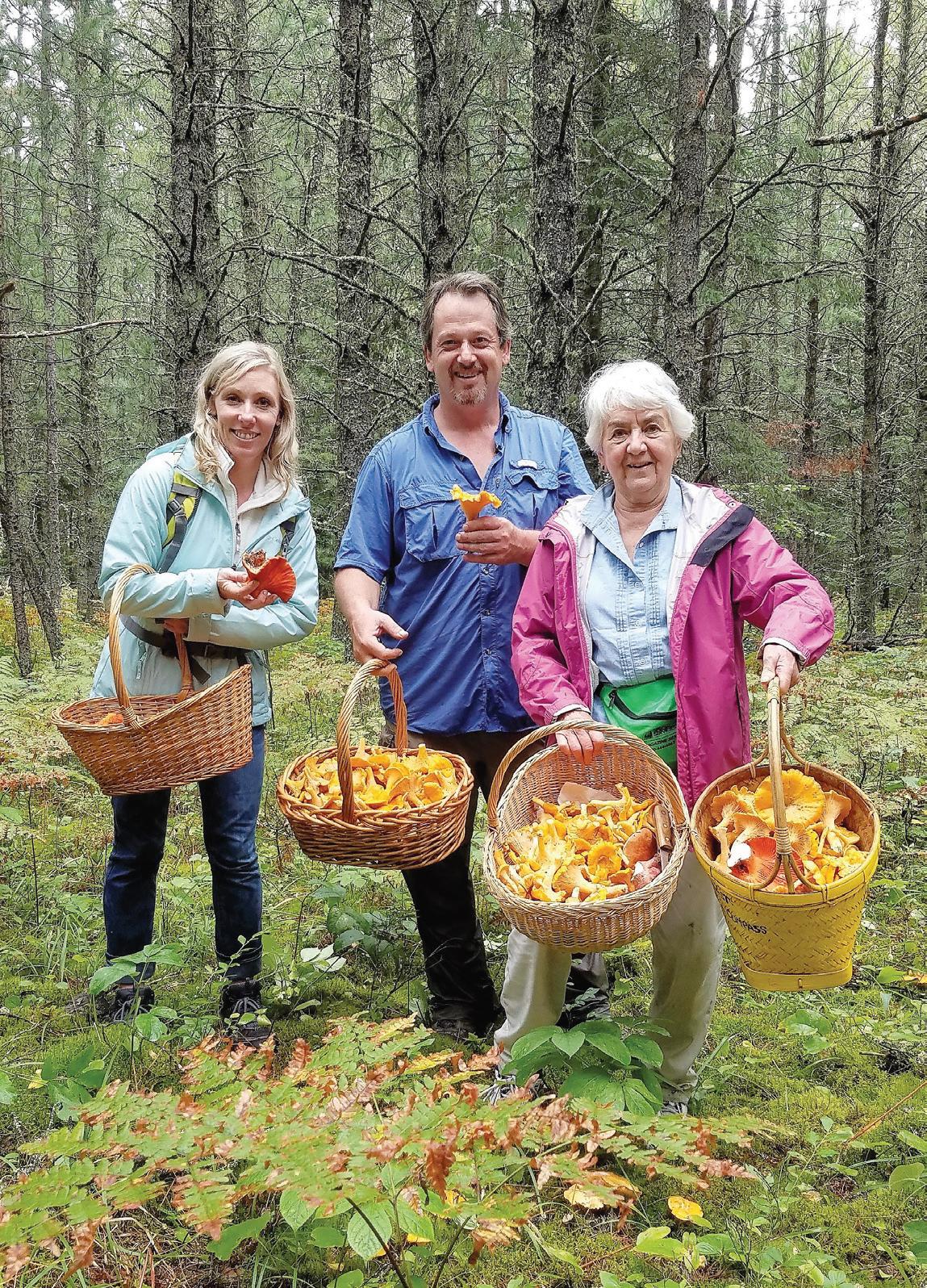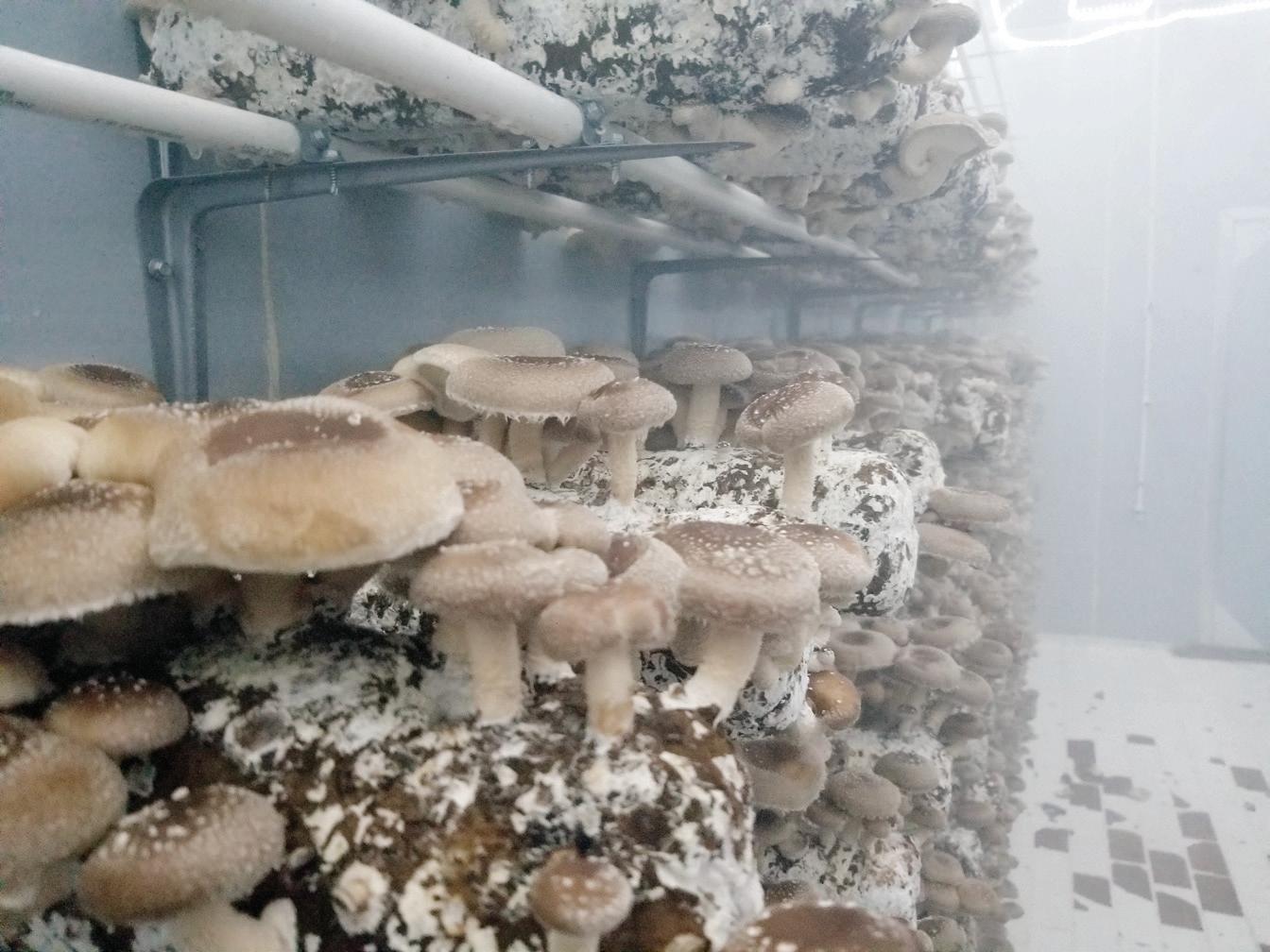
3 minute read
Forest to Fork
PART SCIENCE, PART ART, AND ALL PASSION FOR THIS HIGHLY SUSTAINABLE MUSHROOM OPERATION.
Mike Kempenich knows mushrooms! With forty years of foraging experience, the President and Chief Marketing Officer of Forest to Fork is well versed in mushroom knowledge. He knows the various varieties, the edible from the poisonous, and the best spots to forage for tasty wild fungi. Most importantly, he knows how to cultivate these culinary delights and deliver them to retailers and restaurants alike. Though he has been foraging for the fun of it for many years, Forest to Fork only began because Mike found himself unexpectedly unemployed. He is fond of saying that at the time he had a boss who “gave him the opportunity to look for a new opportunity”. That new opportunity was the chance to take his passion for foraging and turn it into a new career. Originally, the company was called Mikeology – a play on the word mycology, otherwise known as the study of fungi. Mike told us, “I found people generally didn’t know the word and instead thought I was rather vain!” After a few years the name changed to Gentleman Forager, which, with their focus on the wild products of the woods and waters of Minnesota, was a more accurate portrayal of the business. Three years ago they became Forest to Fork when they opened a retail store at Keg and Case Market in St Paul. Through it all, the goal has always been to deliver the freshest and highest quality mushrooms and other wild foods. Successful foraging is a combination of patience, expertise and luck. Obviously, in Minnesota foraging turns difficult once the snow flies. Most varieties of mushrooms go dormant once the temps drop below 55 degrees but Mike found a solution to that problem. He uses a process to clone and cultivate mushrooms that would normally only be found in the wild. His first humble mushroom growing operation was a converted one-car garage. Now, the Forest to Fork facility has grown into something of a wonder – 30,000 square feet with 20 “growing chambers” that have specific atmospheric conditions maintained for each species grown, as they all like a little different environment. It is commonly thought that mushrooms need dark areas to be grown, but that is only necessary for the white button mushroom. Just like in the wild, many varieties need light and dark times of the day to grow properly, as well as different levels of humidity and various substrates. From this facility they are able to harvest and ship their products within 24 hours, and since their mushrooms are never refrigerated, it greatly increases their shelf life and overall quality. It also reduces the carbon footprint of the company. Their carbon footprint is a large consideration for the team at Forest to Fork due to their deep love of the outdoors and their desire to keep the environment clean. From developing methods to collect and reuse the water and CO2 produced by the products they grow, down to the compostable packaging they use, they are committed to being as sustainable as possible while helping to keep our world beautiful. The next phase of Forest to Fork will be completion of their new complex that will include multiple facilities to greatly increase production for national distribution. The design will integrate mushroom cultivation and greenhouses into a single synergistic closed loop which comprises climate, automation, and efficiency improvements. No other company has fully developed a solution for mushrooms, plants, compost, climate, and water into a single fully automated facility. It’s part science, part art, and all passion for Forest to Fork!
Advertisement

Mike, along with two fellow foragers in the forest.
Photos courtesy Forest to Fork.

The Forest to Fork facility has 20 different ‘growing chambers’ with specific atmospheric conditions for each species.

Try it!
Take $2 OFF per pound bulk Shitakes and $1 OFF packaged whole and sliced Shiitakes March 31-April 20!





